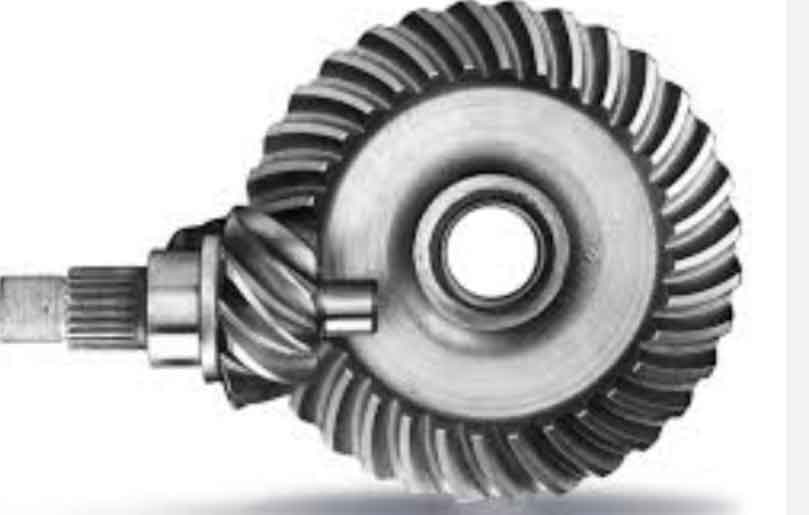Hypoid gear has long been a staple in automotive drivetrains, prized for their ability to handle high torque loads and provide smooth, quiet operation. As the automotive industry shifts towards electric and hybrid vehicles, the role and design of hypoid gear is evolving to meet new performance demands and efficiency standards. This article explores the future of hypoid gear technology in electric and hybrid vehicles, focusing on advancements, challenges, and potential innovations.

Introduction
Electric and hybrid vehicles (EVs and HEVs) represent the forefront of automotive technology, driven by the need for sustainable and efficient transportation solutions. Hypoid gear, traditionally used in internal combustion engine (ICE) vehicles, must adapt to the unique requirements of EVs and HEVs. This includes handling different powertrain characteristics, improving efficiency, and minimizing noise and vibration in electric drivetrains.
Key Differences in Drivetrain Requirements
- Torque Characteristics:
- EVs deliver instant torque, requiring hypoid gear that can handle high initial loads without compromising durability.
- HEVs combine electric and combustion power, necessitating hypoid gear that can seamlessly transition between different power sources.
- Efficiency Needs:
- Higher efficiency hypoid gear is critical to maximize the range of EVs and the fuel economy of HEVs.
- Reducing energy losses in the drivetrain directly impacts the overall performance of these vehicles.
- Noise, Vibration, and Harshness (NVH):
- Electric drivetrains are quieter, making any gear noise more noticeable.
- Minimizing NVH is crucial for maintaining the comfort and appeal of EVs and HEVs.
Advancements in Hypoid Gear Technology
1. Advanced Materials and Coatings
- High-Strength Alloys:
- The use of high-strength, lightweight alloys improves the durability and efficiency of hypoid gear.
- These materials can withstand the high torques of electric motors while reducing overall weight.
- Innovative Coatings:
- Advanced coatings such as diamond-like carbon (DLC) and nano-coatings reduce friction and wear.
- These coatings enhance the efficiency and lifespan of hypoid gear in EVs and HEVs.
2. Precision Manufacturing Techniques
- Additive Manufacturing:
- Additive manufacturing allows for the production of complex hypoid gear geometries with high precision.
- This technology enables the creation of lightweight, optimized hypoid gear designs that improve efficiency.
- High-Precision Machining:
- Advanced CNC machining techniques ensure tight tolerances and superior surface finishes.
- Improved accuracy in hypoid gear manufacturing enhances performance and reduces NVH.
3. Lubrication and Cooling Innovations
- Advanced Lubricants:
- Specialized lubricants designed for electric drivetrains reduce friction and improve efficiency.
- These lubricants can operate effectively at the higher temperatures typical of EV powertrains.
- Integrated Cooling Systems:
- Effective cooling systems are essential to manage the heat generated by high-torque electric motors.
- Integrated cooling solutions for hypoid gear help maintain optimal operating conditions.
Challenges in Hypoid Gear Integration
- Thermal Management:
- Electric drivetrains generate significant heat, requiring effective thermal management to prevent gear degradation.
- Developing materials and lubricants that can withstand high temperatures is critical.
- Noise Reduction:
- With quieter electric motors, hypoid gear noise becomes more prominent.
- Innovations in hypoid gear design and manufacturing are needed to minimize NVH.
- Efficiency Optimization:
- Maximizing drivetrain efficiency is crucial for extending the range of EVs and improving HEV performance.
- Balancing durability with efficiency requires advanced engineering and material science.
Future Directions and Innovations
1. Smart Gears
- Embedded Sensors:
- Integrating sensors into hypoid gear can provide real-time data on temperature, stress, and wear.
- This data can be used to optimize performance and predict maintenance needs.
- Adaptive Lubrication:
- Smart lubrication systems can adjust lubricant flow and properties based on operating conditions.
- This ensures optimal lubrication and cooling, enhancing gear life and efficiency.
2. Hybrid Gear Systems
- Multi-Material Gears:
- Combining different materials in a single hypoid gear can optimize performance characteristics.
- For example, using a hard, wear-resistant material on the teeth and a lightweight core can improve efficiency and durability.
- Variable Ratio Gears:
- Advanced designs such as variable ratio hypoid gear can adjust the gear ratio dynamically.
- This technology can enhance the performance and efficiency of EV and HEV drivetrains.
3. Sustainable Manufacturing Practices
- Eco-Friendly Materials:
- Using recycled and sustainable materials in hypoid gear manufacturing can reduce environmental impact.
- Developing biodegradable lubricants and coatings also supports sustainability goals.
- Energy-Efficient Processes:
- Implementing energy-efficient manufacturing processes reduces the carbon footprint of hypoid gear production.
- Advances in additive manufacturing and precision machining contribute to more sustainable production methods.
Comparative Analysis of Hypoid Gear Applications
| Vehicle Type | Key Requirements | Hypoid Gear Adaptations |
|---|---|---|
| Electric Vehicles (EVs) | High torque, efficiency, low NVH | High-strength alloys, advanced coatings, precision manufacturing |
| Hybrid Vehicles (HEVs) | Seamless power transition, efficiency, durability | Multi-material gears, adaptive lubrication, integrated cooling |
Conclusion
The future of hypoid gear technology in electric and hybrid vehicles is shaped by the need for higher efficiency, durability, and noise reduction. Advanced materials, precision manufacturing techniques, and innovative lubrication and cooling solutions are paving the way for more efficient and reliable hypoid gear. As the automotive industry continues to evolve, hypoid gear will play a crucial role in enhancing the performance and sustainability of EVs and HEVs. Embracing smart technologies, hybrid gear systems, and sustainable practices will ensure that hypoid gear remain at the forefront of automotive innovation.
